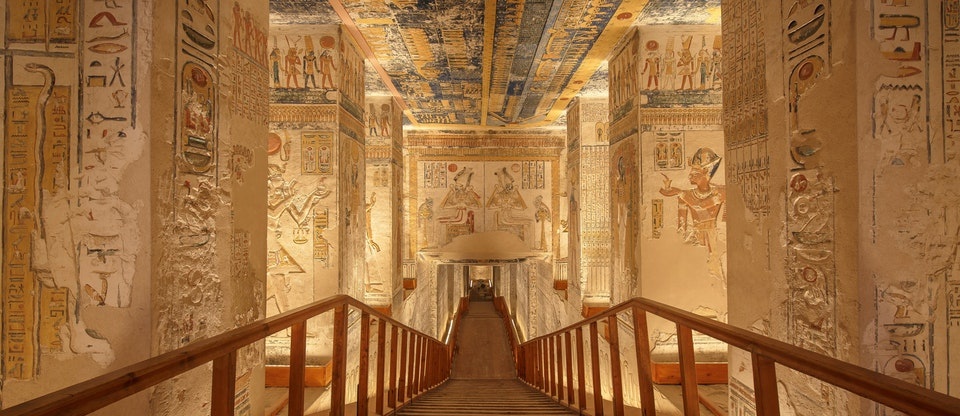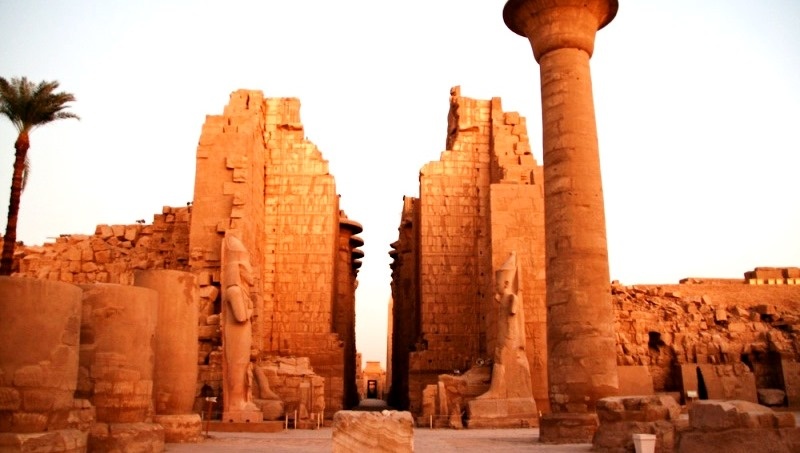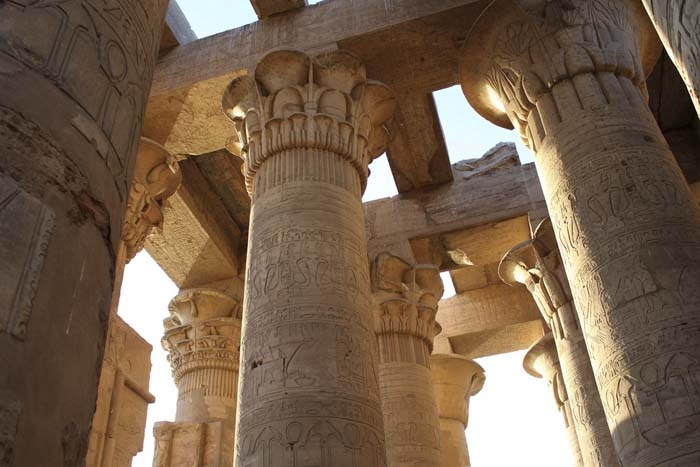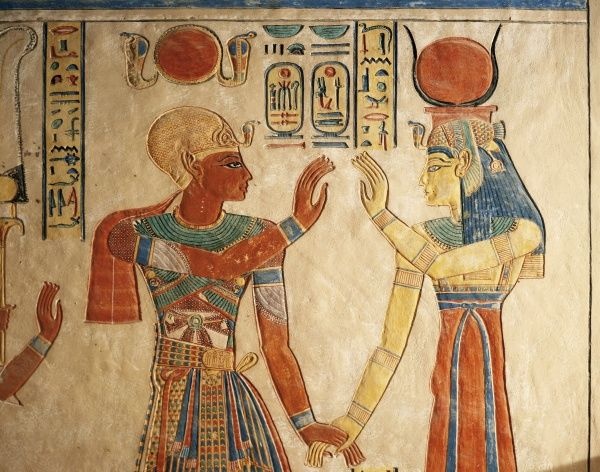De kolossen van Memnon in Luxor
Kolossen van Memnon zijn twee massieve stenen beelden van koning Amenhotep III zijn de enige overblijfselen van een complete dodentempel. De beelden zijn gemaakt van blokken kwartsietzandsteen die in Caïro bestaan en vervolgens 700 km naar Luxor zijn verplaatst
De kolossen van Memnon in Luxor
COLOSSI OF MEMNON
The two faceless Colossi of Memnon , originally representing Pharaoh Amenhotep III, rising majestically about 18m from the plain, are the first monuments tourists see when they visit the west bank. These magnificent colossi, each cut from a single block of stone and weighing 1000 tonnes, sat at the eastern entrance to the funerary temple of Amenophis III, the largest on the west bank. Egyptologists are currently excavating the temple and their discoveries can be seen behind the colossi. These two gigantic, 59-foots tall statues are the first sight that greets visitors who take the ferry across from the East Bank. They were made famous in antiquity by a mysterious sound emitted from one of them each sunrise. Scientists now think that this sound was caused by air passing through pores in the stone as it was warmed in the sunlight, but there is no way to confirm this since the sound stopped centuries ago.
These two gigantic, 59-foots tall statues are the first sight that greets visitors who take the ferry across from the East Bank. They were made famous in antiquity by a mysterious sound emitted from one of them each sunrise. Scientists now think that this sound was caused by air passing through pores in the stone as it was warmed in the sunlight, but there is no way to confirm this since the sound stopped centuries ago.Regardless of its cause, the sound was the source of the statues’ name as it caused the Greeks to believe that the statues were of the immortal Memnon . In reality, the statues are of Amenhotep III and his wife, Tiye, and they used to guard the entrance to a great temple complex that some believe might have rivalled Karnak in size. Amenhotep III, who ruled during the New Kingdom around the peak of Egypt’s historic power, is regarded as one of the most prolific builders of Ancient Egypt. This temple would have been the most significant of his building projects, but little remains of it today. Archaeologists believe that the temple was quickly ruined by repeated plundering and because, unlike other monuments, it was located within the floodplain of the Nile. The limestone that the Egyptians used in construction was eroded away by centuries of exposure to the annual floodwaters.



















